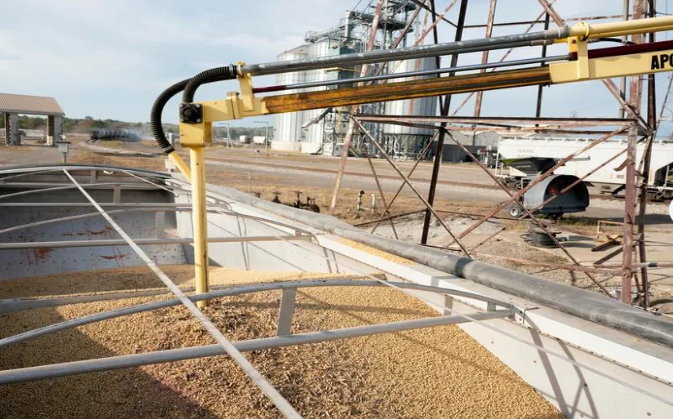November 27, 2025 | 02:13 GMT +7
November 27, 2025 | 02:13 GMT +7
Hotline: 0913.378.918
November 27, 2025 | 02:13 GMT +7
Hotline: 0913.378.918

Soybean and Corn harvest season in central Ohio.
The massive influx of crops is testing growers who are already grappling with grain prices near four-year lows, stiff competition for global export sales and farm incomes that are down 23% from a record high just two years ago.
Many Midwestern farmers still have grain left in storage from 2023, after they refused to sell a record corn crop due to low prices. Now, dry weather is accelerating this year's harvests and forcing grain handlers in some areas to store corn outside, rather than in storage bins.
"It has been fast and furious," Brent Johnson, a corn and soybean farmer in Ashland, Illinois, said of harvesting.
Weeks of warm and dry weather across the Corn Belt this autumn sped up crop maturity and enabled combines to keep rolling. As a result, farmers harvested 47% of the country's second biggest corn crop in history by Oct. 13, topping the five-year average of 39%, according to U.S. data.
The harvest of the record-large soybean crop was 67% complete by Oct. 13, the fastest pace since 2012, when a major drought limited production.
Jeff O'Connor, who grows corn and soybeans near Kankakee, Illinois, said his employees only had a couple of half-days off to rest in the past month due to rapid harvesting.
"My people and equipment would like a break," he said.
As soy harvesting winds down, farmers are moving on to corn, which typically yields more than three times as much grain per acre than soybeans. At some Midwest elevators, the flow of corn from the fields has been filling up storage, causing long lines of trucks waiting to dump their loads.
In Shell Rock, Iowa, ethanol producer POET is storing corn on the ground, local farmer Caleb Hamer said, adding that he dumped some of his harvest on a pile that looked like it held 1.5 million bushels.
"We are harvesting a crop too fast for our storage infrastructure. That's the biggest thing," said Chad Henderson, founder of Wisconsin-based Prime Agricultural Consultants.
Quick harvesting and localized storage squeezes are forcing farmers to consider selling some crops for less than it cost to produce them. Yet corn futures prices are signaling they should hold the grain for a few months, if possible.
On the Chicago Board of Trade, benchmark December corn futures were trading at a roughly 22-cent discount to the May 2025 contract. That means farmers could earn 22 cents a bushel by selling their corn for deferred delivery in May.
Still, growers should not store their harvest without booking any sales and risk a deeper market downturn, CoBank economist Tanner Ehmke said.
Chris Gibbs, who grows corn and soybeans in Ohio, said he has not made any advance deals to sell his autumn harvests for the first time in 48 years of farming.
"My marketing plan is to keep my head down and wait for an opportunity to come along, which is a very poor plan," Gibbs said.
(Reuters)

(VAN) A new study reveals how the simultaneous effects of ocean acidification, salinity and loss of oxygen are making the world more fragile.

(VAN) Hopes are growing that the creation of the first 3D turkey gut model could be a turning point in the battle against the virulent blackhead disease.

(VAN) Tyson, America’s biggest meat supplier, plans to shutter one of its largest beef processing plants as the industry continues to struggle with low cattle supplies and political pressure from Washington.

(VAN) New FAO study shows how digital solutions are empowering farmers and fishers to prevent losses and build resilient agrifood systems.

(VAN) Brazil's COP30 presidency pushed through a compromise climate deal on Saturday that would boost finance for poor nations coping with global warming but that omitted any mention of the fossil fuels driving it.

(VAN) Poultry farmers in the UK have been warned that they could face one of the worst winters yet for bird flu.

(VAN) Prices of main-crop paddy have risen sharply, with jasmine rice hitting 16,100 baht per tonne — the highest level in years.